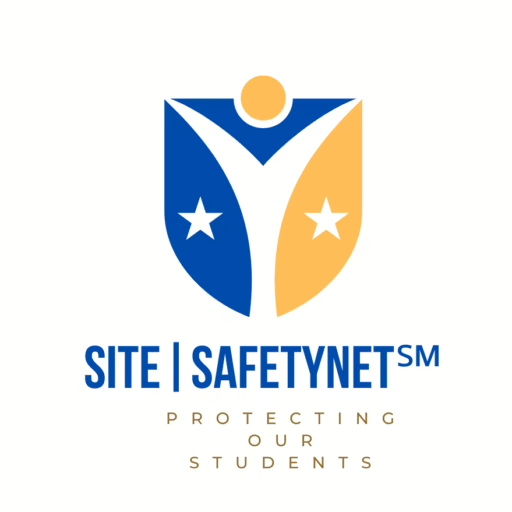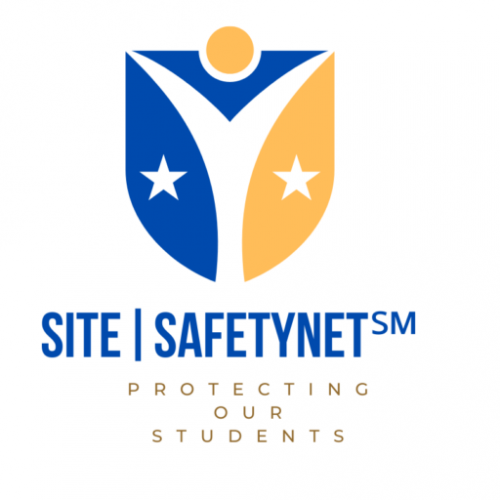Investor Fund Initiative for “Every Dollar for Safer Schools” Campaign
Launching the “Every Dollar for Safer Schools” Campaign Fund: A Non-Profit and For-Profit Partnership for Enhanced School Safety
We are proud to announce the initiation of the “Every Dollar for Safer Schools” campaign fund, a crucial step towards redefining school safety across the United States. Protecting Our Students, Inc., a non-profit organization dedicated to advancing school safety, jointly spearheads this campaign. In a groundbreaking partnership, the non-profit collaborates with SITE|SAFETYNET℠, a for-profit entity conducting comprehensive safety assessments for K-12 schools.
This initiative transcends conventional fundraising efforts. It embodies a mission-driven approach to creating safer educational environments for our children. By participating in this campaign, investors are not merely contributing financially; they are becoming integral parts of a movement committed to protecting and enhancing the future of education in our nation.
The funds raised through this campaign will be allocated entirely towards financing the safety assessments conducted by SITE|SAFETYNET℠ in K-12 schools. This strategic collaboration ensures that every dollar contributed goes directly towards practical, on-the-ground improvements in school safety.
The campaign invites students, teachers, parents, law enforcement, and community members to join. Their support and $1 donations are pivotal in making schools safer for our children, where education and well-being go hand in hand. The “Every Dollar for Safer Schools” campaign is more than a fundraising initiative; it’s a commitment to making a lasting impact on the safety and security of educational institutions nationwide. The initial goal is for SITE|SAFETYNET℠ to safety site assess 10,000 K-12 schools nationwide.
Investor Engagement Strategy:
Our approach to raising funds from investors is anchored in a vision of shared responsibility and collective impact. We understand that investors seek opportunities that yield financial returns and create a significant social impact. By funding the “Every Dollar for Safer Schools” campaign, investors will be pivotal in enabling a nationwide effort to enhance school safety protocols through SITE|SAFETYNET℠’s AI-driven SaaS subscription safety assessment K-12 framework.
Total Capital Commitment: $470,000
We are delighted to unveil the financial framework for our imminent investment initiative, the “Every Dollar for Safer Schools” campaign. The fund has established a total capital commitment requirement of $470,000 for participation. This figure embodies the collective capital raised, dedicated exclusively to ensuring the triumph of the “Every Dollar for Safer Schools” campaign. Through this fund, we are committed to channeling these resources effectively to make a tangible impact in enhancing school safety.
Why SITE|SAFETYNET℠?
The core objective of the “Every Dollar for Safer Schools” campaign is to create safer learning environments through the collective effort of small, individual contributions. Each $1 donation will fund comprehensive safety assessments in K-12 schools nationwide, leveraging the advanced capabilities of SITE|SAFETYNET℠. This state-of-the-art platform uses AI-driven technology to conduct thorough safety and vulnerability assessments, ensuring that our schools are equipped to handle potential security threats.
We can make a substantial impact by pooling together the resources of millions of individuals within the K-12 community. The funds raised will be instrumental in implementing SITE|SAFETYNET℠ assessments in schools, enabling them to identify and address vulnerabilities in their security protocols. These assessments are critical in today’s world, where ensuring the safety of our students and teachers is of paramount importance.
Through this campaign, we are not just raising funds; we are building a community committed to the safety and well-being of our children. Every dollar contributed is a step towards creating a safer, more secure educational environment for our youth. Let’s unite to make a difference in the lives of millions of students, teachers, and parents nationwide.
Join us in this crucial mission to enhance school safety protocols – your contribution can shape the future of educational safety in America.
Target Market Demographics:
K-12 Students: The National Center for Education Statistics (NCES) reported approximately 56.4 million students in U.S. K-12 schools, comprising 50.7 million in public schools and 5.7 million in private schools.
Teachers: NCES data indicates around 4.2 million full-time-equivalent teachers, with 3.7 million in public schools and 0.5 million in private schools.
Parents: Considering a conservative estimate, there are at least 56.4 million parents or guardians, assuming one parent/guardian per K-12 student. This number is potentially higher when accounting for multiple guardians.
Police Departments: The number of police departments in the U.S. varies widely. According to the Bureau of Justice Statistics, there were over 18,000 law enforcement agencies in the United States as of 2016. This includes city police departments, county sheriff’s offices, state police/highway patrol, and federal law enforcement agencies.
Targeted Campaign Strategy for K-12 Markets: These figures provide a substantial potential audience for the “Every Dollar for Safer Schools” campaign targeted at the K-12 community in the United States.
Focusing exclusively on the K-12-related markets of students, teachers, parents, and law enforcement for the “Every Dollar for Safer Schools” campaign necessitates a specialized approach. This strategy involves crafting communication and engagement methods that resonate specifically with these groups. Below is a detailed cost breakdown, giving investors a clear view of the necessary investments for effective market penetration in these targeted demographics.
Budget Breakdown:
| Expense Category | Estimated Cost ($) |
| Market Research | 15,000 |
| Strategy Development | 20,000 |
| Social Media Campaigns | 60,000 |
| Content Creation | 40,000 |
| Partnerships with Schools | 30,000 |
| Student Ambassador Programs | 25,000 |
| Local Community Events | 50,000 |
| Promotional Materials | 20,000 |
| Media Outreach | 30,000 |
| Staffing | 100,000 |
| Administrative Expenses | 30,000 |
| Contingency Fund | 50,000 |
| Total Estimated Expense | 470,000 |
The funds from investors will be strategically allocated to various facets of the campaign, ensuring maximum reach and efficacy.
Market Analysis and Strategy Development:
Market Research: Understanding demographics, communication channels, and engagement strategies specific to students, teachers, parents, and law enforcement.
Strategy Development: Tailoring the campaign’s approach to effectively reach and resonate with the K-12 market and law enforcement.
Digital and Social Media Engagement:
Social Media Campaigns: Focused on platforms popular among students and parents, such as Instagram, TikTok, and Facebook.
Content Creation: Developing engaging and relevant content for the target audience.
Educational Institution Outreach:
Partnerships with Schools: Collaborating with schools for newsletters, assemblies, and parent-teacher meetings.
Student Ambassador Programs: Creating and managing programs for student volunteers to promote the campaign within schools.
Law Enforcement Community:
Targeted Communication Channels: To effectively reach and engage our valued partners in law enforcement, we utilize targeted communication channels, including direct outreach, specialized law enforcement forums, and collaborative events, ensuring that our fundraising efforts for enhancing school safety are clearly conveyed and accessible to those dedicated to protecting our students.
Community Engagement and Events:
Local Community Events: Organizing events in schools and community centers.
Promotional Materials: Flyers, posters, and brochures distributed in schools and community centers.
Public Relations:
Media Outreach: Targeting local and regional news outlets popular among parents and educators.
Operational and Administrative Costs:
Staffing: Dedicated team for campaign management, coordination with schools, law enforcement, and community outreach.
Administrative Expenses: Office, utilities, and other overhead costs.
Contingency Fund:
Unforeseen Expenses: To cover unexpected costs or opportunities for expanding the campaign’s reach.
Detailed Campaign Plan:
Digital and Social Media Engagement: Leveraging platforms like TikTok, Instagram, and Facebook to connect with students and parents.
Educational Institution Outreach: Partnering with schools for effective information dissemination.
Law Enforcement Events: Our focus on police events centers on participating in and contributing to law enforcement conferences and workshops, where we can directly engage with officers, share insights, and collaborate on strategies to enhance school safety.
Community Engagement and Events: Hosting local events to foster community participation.
Public Relations: Engaging local and regional media for broader campaign coverage.
Cost Justification: Each expense category is strategically allocated to maximize the campaign’s reach and impact within the K-12 community.
Expected Impact and ROI Analysis:
Expected Impact
Projected Reach: Targeting over 100 million individuals within the K-12 community and law enforcement.
Potential Donor Engagement: 10-15% participation rate, leading to 10-15 million donations.
Estimated Returns: We anticipate raising $10-15 million in donations. [over 10,000 schools assessed]
ROI Analysis
Total Campaign Investment: $470,000.
Anticipated Fundraising Returns: $10-15 million.
ROI: Based on these figures, the ROI is estimated to be 2000-3000%, a substantial return considering the social impact and the financial aspect.
Metrics for Success:
To effectively measure the return on investment (ROI) for investors in a capital fund, especially focusing on a marketing donor plan, it’s crucial to establish clear, quantifiable metrics. These metrics help track the progress and success of the fund’s initiatives and provide investors with transparent and objective data to evaluate their investment performance. Let’s delve into the specifics of the metrics you mentioned:
Engagement Rates
Tools: Utilization of advanced social media analytics tools and website traffic analysis software to track engagement.
KPIs (Key Performance Indicators): Includes metrics such as likes, shares, comments, website visits, time spent on site, and bounce rate.
Reporting: Regular updates (monthly or quarterly) showing trends in engagement rates, with comparative analysis against industry benchmarks or past performance.
Goal: To achieve a consistent upward trend in engagement rates, indicating growing interest and involvement from the target audience.
Donation Counts
Target: Aiming for 10-15 million donations over a specified period.
Tracking Mechanism: Implement a robust tracking system that categorizes donations by size, frequency, and source.
Segmentation: Analysis of donation trends across different donor segments to identify areas of strength and opportunities for improvement.
Reporting: Providing investors with detailed reports showing progress towards the donation target, including insights into the effectiveness of different fundraising strategies.
Community Feedback
Collection Methods: Post-campaign surveys, focus groups, and online feedback forms to gather community feedback.
Metrics: Assessment of satisfaction levels, perceived impact, and willingness to continue supporting or recommending the fund.
Analysis: Detailed analysis of feedback to identify patterns, strengths, and areas for improvement.
Actionable Insights: Using feedback to refine future campaigns and strategies enhances effectiveness and community engagement.
Additional Metrics for Success:
Financial Performance Metrics
ROI Calculation: Regular ROI calculation based on the fund’s financial performance, including profits generated versus initial investments.
Revenue Growth: Monitoring the revenue growth of the funded projects or ventures, which contributes to the fund’s overall success.
Impact Assessment
Social/Environmental Impact: For funds focusing on social or environmental impact, measuring the tangible outcomes of funded projects in these areas.
Beneficiary Impact: Assessing the direct impact on the target group or beneficiaries can be a key indicator of the fund’s success in achieving its objectives.
By employing these metrics, the fund can provide investors with a comprehensive view of its performance, both in terms of financial returns and its broader impact. Regular reporting, using a mix of quantitative data and qualitative insights, will enable investors to measure and understand the ROI of their investment effectively.
This comprehensive plan is designed to engage the K-12 community and Law Enforcement effectively, with the investment justifying the potential for significant social impact and fundraising returns. The campaign is structured to ensure measurable success and a substantial return on investment.

